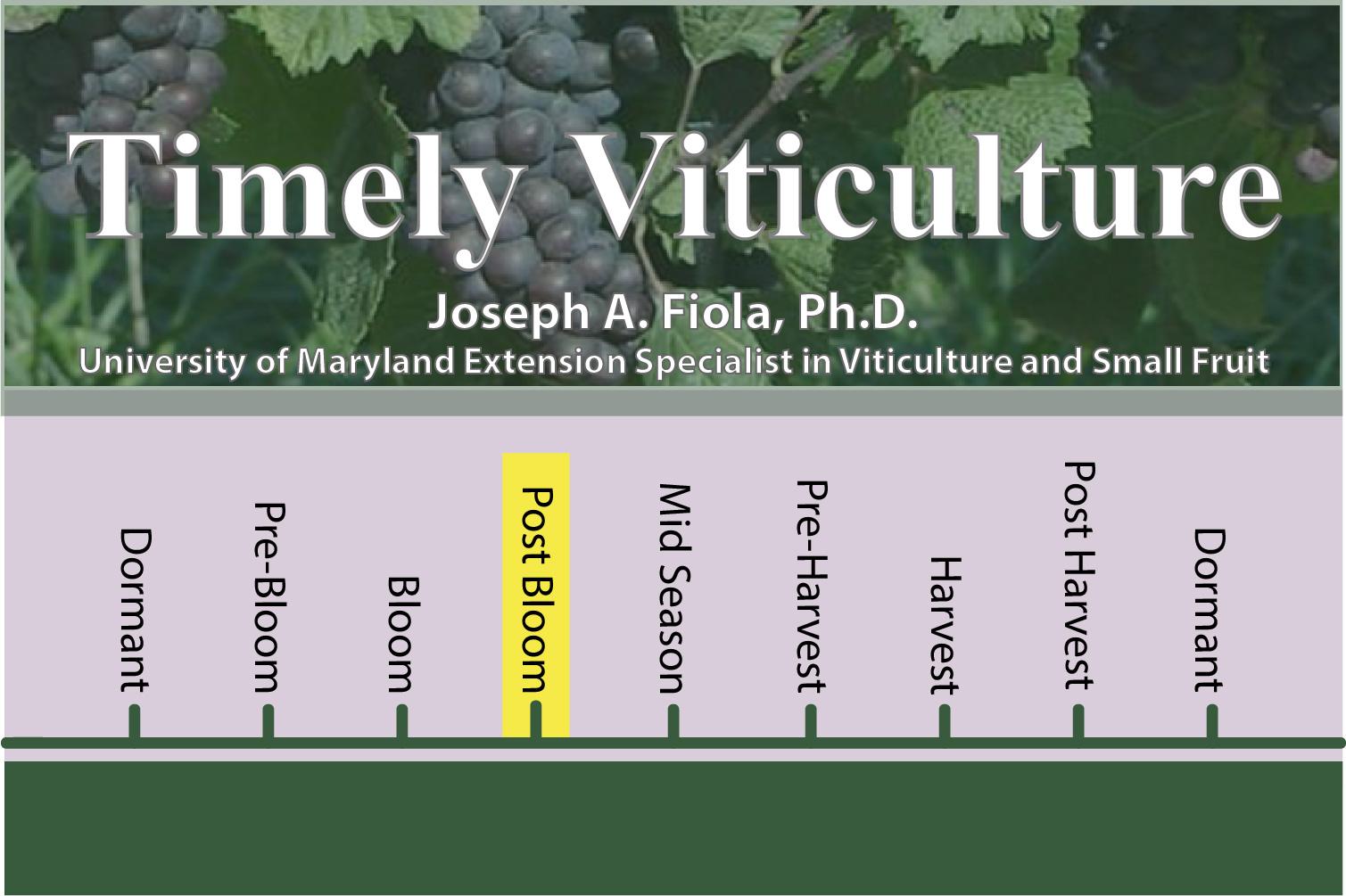Grape Fruit Set and Shatter (Coulure)
Grape flowering and fruit set is a very complicated process, which can be influenced by cultivar, environment, vine status and history, biotic and abiotic factors. Optimum conditions for fruit set include high light intensity, warm temperature, and adequate soil moisture and nutrients at bloom. Good fruit set is important for proper cluster formation, development, and ultimate desired maturation and harvest of fruit. The following is some basics on fruit set and some potential causes of poor fruit set.
- Most cultivated grapes have perfect flowers with both male (anthers, pollen) and female (pistils, ovary) parts, so they are capable of self-pollination, although it is aided by wind and insects.
- Each flower in a cluster can be pollinated, “set”, and become a single grape.
- Grape inflorescence contains hundreds of flowers however, only a portion of those flowers will develop into berries
- Ovaries must be successfully pollinated and develop seed to “set” and enlarge into a berry.
- Seeds produce hormones that cause an increase in berry size; berries with a greater number of seeds will be larger
- Flowers drop primarily in the two weeks following full bloom.
- Fruit set is a “self-thinning” technique that enables the vine to regulate the crop, based on vine health.
- Normal fruit set is typically in the range of 30-50% of total blossoms
- Less than 30% is considered “poor” fruit set.
- Each cultivar has a specific range of the number of blossoms/cluster (cluster size) and the percent of blossoms which will typically set.
- Low number of berries per cluster can be due to fewer blossoms/cluster, not necessarily poor fruit set.
- Low number of berries per cluster can be due to fewer blossoms/cluster, not necessarily poor fruit set.
- Poor fruit set can be the result of abnormalities in vine physiology as well as many biotic and abiotic factors before and during bloom.
- Poor fruit set typically means the cluster contains higher than the average number of small seedless berries (commonly known as “hens and chicks”, shot berry).
- “Shatter: or “Coulure” (coined by the French) is the term for this malady, referring to excessive shedding of ovaries and young berries, leading to clusters with few berries.
Some factors that can decrease fruit set.
- Pre-bloom cultural practices such as shoot trimming or leaf pulling.
- Trace bloom leaf pull can be used to intentionally decrease fruit set in tightly clustered cultivars to reduce berry to berry contact to decrease Botrytis.
- Overly vigorous or weak vines (insufficient or inefficient leaf area); if the vine is not in balance, the shoots will divert resources away from the inflorescences
- Nutrient deficiencies
- Boron and/or Zinc deficiencies can inhibit pollen tube growth and development which is necessary for proper pollination)
- Excessive applications of phosphorus or high pH soils can induce Zinc deficiency.
- Boron and Zinc excess/toxicity can also adversely affect pollination and fruit set.
- Boron and/or Zinc deficiencies can inhibit pollen tube growth and development which is necessary for proper pollination)
- Deficiencies of any of the essential mineral nutrients can affect fruit set detrimentally.
- Deficiency of luxury consumption of nitrogen can lead to ‘poor’ fruit set.
- Molybdenum deficiency has been associated with poor fruit set in some cultivars (Merlot).
- Pre-bloom or post-bloom exposure to hormonal herbicide drift/volatilization
- Depending on the specific timing of the event, exposure can decrease pollination and set or can abort or "freeze" berry development at the stage when they were exposed, resulting in very loose, dyssynchronous ripening, berries and clusters.
- Disease, insect, or other biotic stress before bloom can decrease fruit set.
- Disease on clusters (Phomopsis, Downy mildew, powdery mildew, etc.)
- Stress from foliar diseases
- Weather/Environmental conditions, including excessive heat (> 32°C/ 90°F) or cold (<15°C/59°F) can adversely affect pollen development, pollination, and fertilization.
- Rain or extended periods of overcast weather can:
- physically inhibit pollination and fertilization
- result in the failure of flower caps to be shed which will reduce fertilization.
- reduce radiation and photosynthesis, which could limit carbohydrate supply to the inflorescence.
- Rain or extended periods of overcast weather can:
- Water stress can adversely affect fruit set.
- Differences in cultivars
- Some cultivars (Merlot) may be more susceptible to environmental conditions leading to poor set.
- Certain cultivars may appear to have “poor” fruit set because they normally have a relatively low number of berries per cluster (small, loose clusters).
Grapevines have a great propensity to compensate, and a reduced number of berries per cluster due to poor fruit set will typically be at least partially compensated by increased growth of the remaining berries].
As with any malady in the vineyard, it is important to document/keep a record of vines or blocks with poor fruit set. It is also important to record seasonal weather data, especially during the bloom period.
Timely Viticulture is designed to give those in the Maryland grape industry a timely reminder on procedures or topics they should be considering in the vineyard.
Explore more topics on Timely Viticulture
